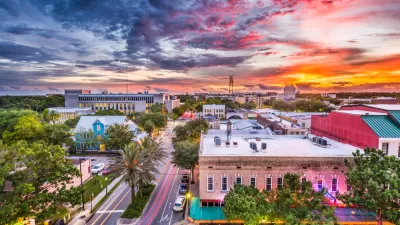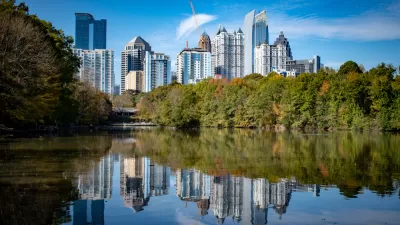While it's fun to tease about the architectural shortcomings of most newly constructed urban residential buildings in the United States, the causes of its ubiquitous sameness reveals the depths of the country's housing crisis.

Patrick Sisson writes:
A wave of sameness has washed over new residential architecture. U.S. cities are filled with apartment buildings sporting boxy designs and somewhat bland facades, often made with colored panels and flat windows.
After posing the question to Twitter of what to call this new ubiquitous style of residential architecture, Sisson was met with a "goldmine."
Some suggestions seemed inspired by the uniformity of design in computer programs and games: Simcityism, SketchUp contemporary, Minecraftsman, or Revittecture. Some took potshots at the way these buildings looked value-engineered to maximize profit: Developer modern, McUrbanism, or fast-casual architecture. Then there are the aesthetic judgement calls: contemporary contempt, blandmarks, LoMo (low modern), and Spongebuild Squareparts.
But what to call contemporary residential architecture is less important than how it got to look so similar. According to Sisson, these buildings are a symbol of the contemporary housing crisis: a lack of developable land, rising costs (land, materials, labor), and an "acute" lack of affordable housing. The similar look of new residential construction in geographically disparate and cultural unique cities all over the country comes down to code, costs, and craft, according to Sisson.
FULL STORY: Why do all new apartment buildings look the same?

Maui's Vacation Rental Debate Turns Ugly
Verbal attacks, misinformation campaigns and fistfights plague a high-stakes debate to convert thousands of vacation rentals into long-term housing.

Planetizen Federal Action Tracker
A weekly monitor of how Trump’s orders and actions are impacting planners and planning in America.

San Francisco Suspends Traffic Calming Amidst Record Deaths
Citing “a challenging fiscal landscape,” the city will cease the program on the heels of 42 traffic deaths, including 24 pedestrians.

Defunct Pittsburgh Power Plant to Become Residential Tower
A decommissioned steam heat plant will be redeveloped into almost 100 affordable housing units.

Trump Prompts Restructuring of Transportation Research Board in “Unprecedented Overreach”
The TRB has eliminated more than half of its committees including those focused on climate, equity, and cities.

Amtrak Rolls Out New Orleans to Alabama “Mardi Gras” Train
The new service will operate morning and evening departures between Mobile and New Orleans.
Urban Design for Planners 1: Software Tools
This six-course series explores essential urban design concepts using open source software and equips planners with the tools they need to participate fully in the urban design process.
Planning for Universal Design
Learn the tools for implementing Universal Design in planning regulations.
Heyer Gruel & Associates PA
JM Goldson LLC
Custer County Colorado
City of Camden Redevelopment Agency
City of Astoria
Transportation Research & Education Center (TREC) at Portland State University
Jefferson Parish Government
Camden Redevelopment Agency
City of Claremont





























